Rare Rhinos: Best Places To See Rhinos In Kenya & Tanzania
Estimates suggest the total population of white and black rhino on the African continent today, stands at around 21,000 individuals. For many safari enthusiasts, viewing these critically endangered animals in the wild is a highly prized and sought after experience, and one that is not always easily attainable.
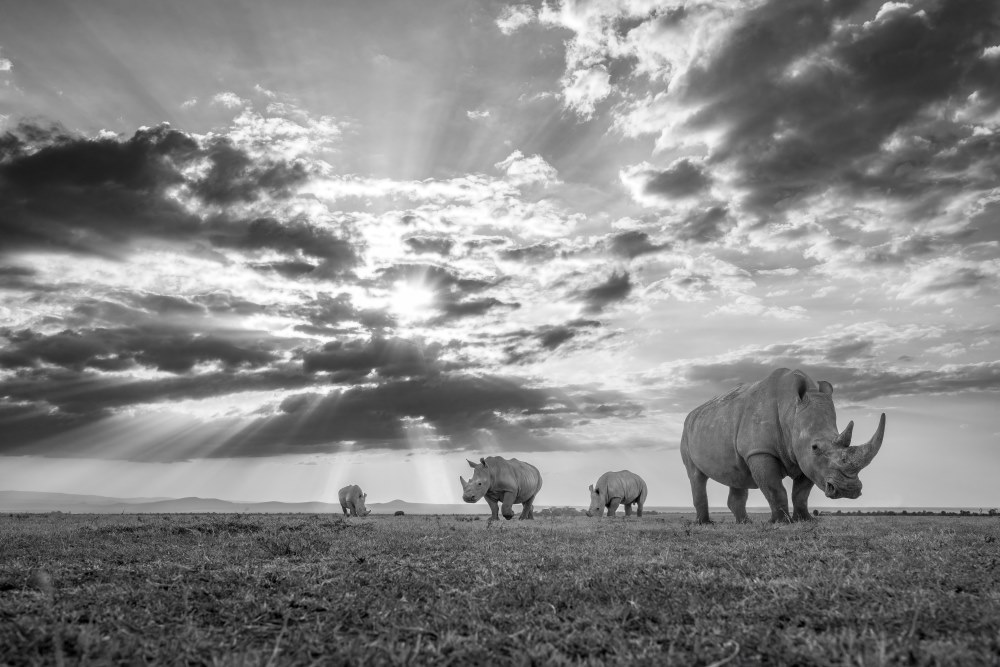
White rhino in Ol Pejeta Conservancy, one of the leading rhino conservation and population restoration sanctuaries in East Africa.
The Rhino's Struggle
Rhino once roamed the African continent in vast numbers probably several hundred thousand strong. However, the Victorian era saw a rise in the popularity of big game hunting, with European settlers decimating a variety of wildlife in staggering numbers. Conservationists, many of whom were also big game hunters, noticed the decline in wildlife, prompting the formation of protected wildlife reserves, leading to numbers steadily increasing into the mid-20th century. The 1960’s brought new problems for rhino, as the demand for rhino horn exploded, leading to numbers across the continent dropping from an estimated 70’000 to just 10,000 over a 20-year period. Today, rhino are almost constantly monitored and often live under armed guard, as intense conservation efforts work to increase their numbers.
Where to see rhino in Kenya:
Ol Pejeta Conservancy
Home to our Ol Pejeta Bush Camp, the region is a beacon of sustainability and holds East Africa’s largest black rhino population. The conservancy prides itself in safeguarding the critically endangered species, alongside other vulnerable species such as African wild dog, cheetah, lion, Grevy’s zebra and Jackson’s hartebeest.
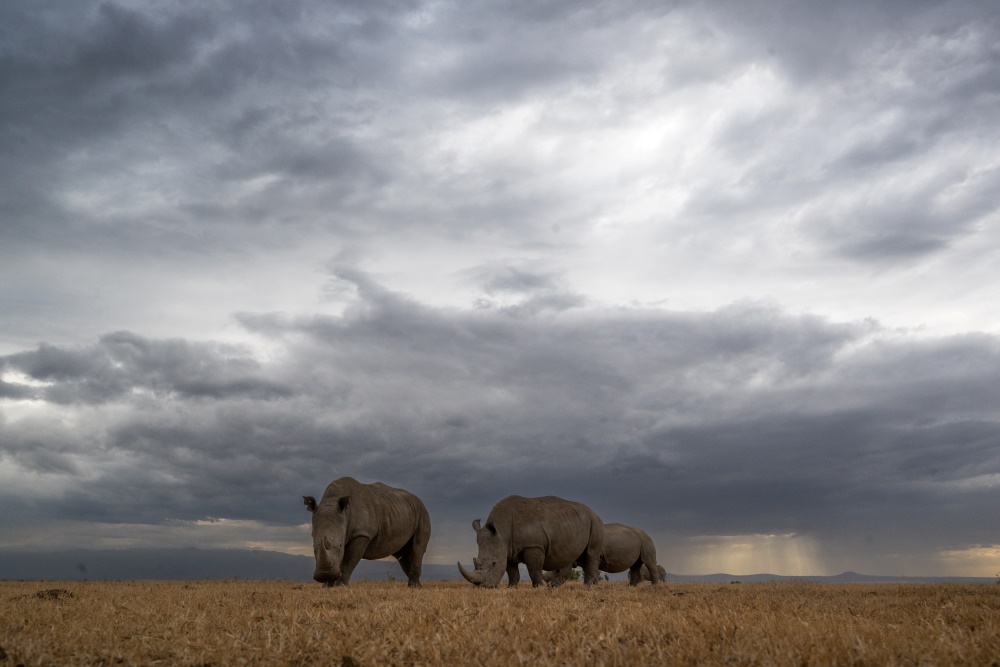
Both black and white rhino reside within Ol Pejeta Conservancy, as well as a number of other endangered species.
Housing over 165 critically endangered black rhino and 44 southern white rhino, Ol Pejeta Conservancy also provides sanctuary for Najin and Fatu, the two last remaining northern white rhino on the planet. However, neither of them can reproduce due to their age. In August 2019 a pioneering egg harvesting procedure was carried out in the Ol Pejeta Conservancy, fuelling hope for the survival of the species. Although already classified as “functionally extinct”, the future of this sub-species is now dependent on the development of in vitro fertilisation techniques.
“One of the best places in all of Africa to see rhino” – Ol Pejeta Bush Camp guest, TripAdvisor
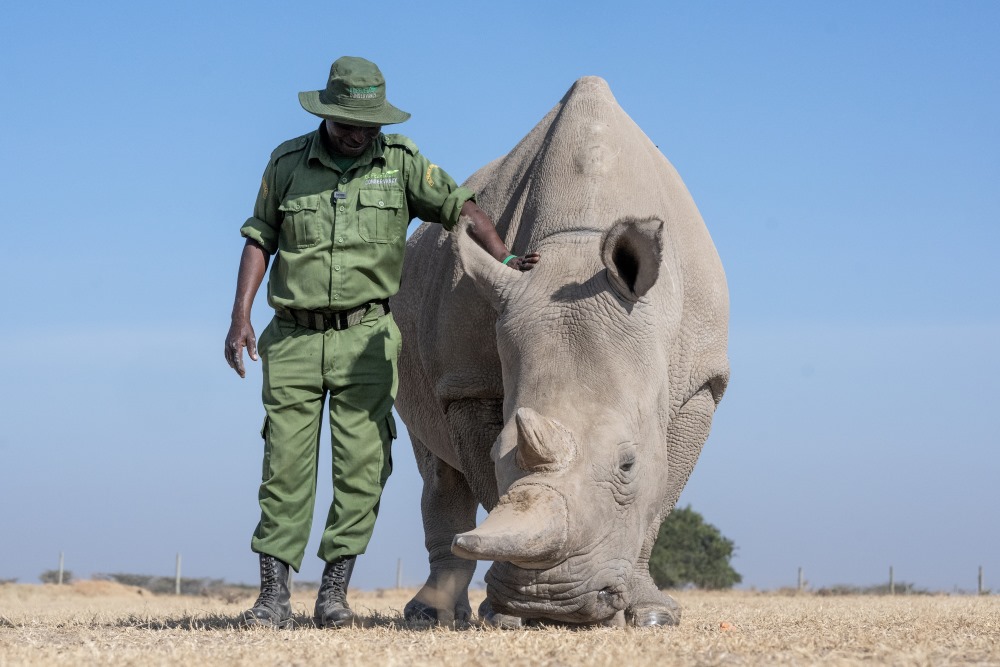
Functionally extinct, the world's last two remaining northern white rhino reside within Ol Pejeta Conservancy.
The 360km² conservancy offers a wide range of habitat across grasslands, bushlands, and riverine forest. Such diversity of habitat has created an incredibly rich diversity of wildlife, second only to Kenya’s famous Masai Mara. In addition to traditional game viewing activities and the opportunity to view the Big Five, visitors to Ol Pejeta Conservancy are spoiled with a variety of additional interactive conservation-driven activities on offer.
Lewa Wildlife Conservancy
The current Lewa Wildlife Conservancy was founded in 1995, but it’s origin dates back to 1983 when a small rhino sanctuary was formed. As the rhino population in the sanctuary grew, a need developed for more space, resulting in the creation of the new conservancy in 1995. The population in Lewa has grown from an initial 15 to 255 rhino today, making up a significant portion of Kenya’s total population.
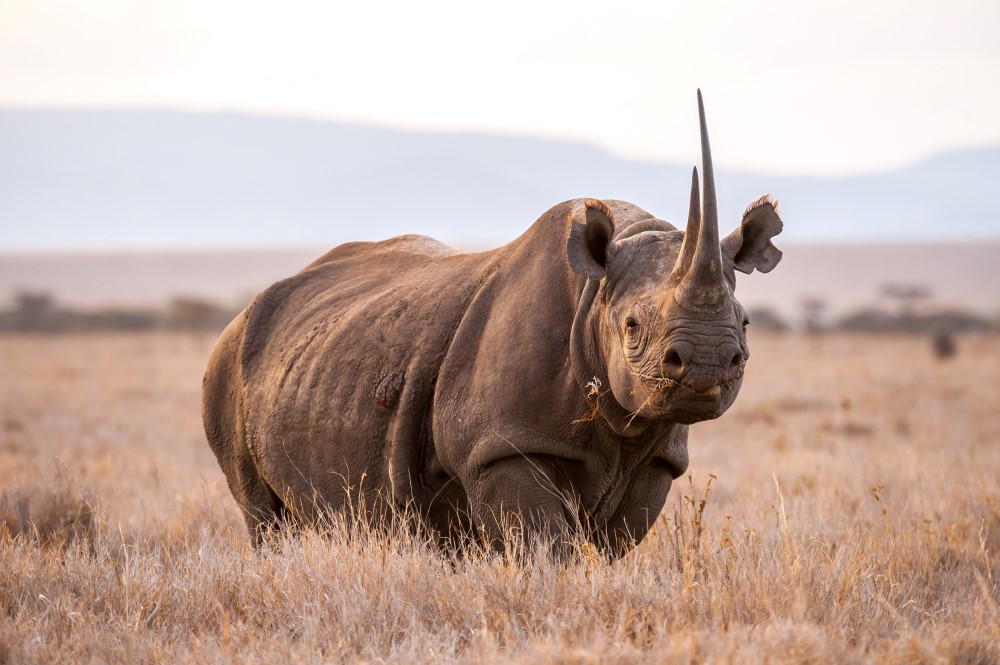
The Lewa Wildlife Conservancy has produced a successful model for rhino conservation in Kenya.
There are a variety of accommodation options within the Lewa Conservancy, offering a range of luxury and adventure. In addition to game drives and walking safaris, there are several activities available offering valuable insight into the various elements of the conservancy. These include anti-poaching, visiting local schools, and exploring the crucial elephant underpass. Both Ol Pejeta and Lewa conservancies have used conservation and low-impact tourism as a platform to protect and grow vulnerable wildlife species.
Nairobi National Park
Located on the south-western outskirts of Nairobi, Nairobi National Park is home to more than 50 black rhino, and a healthy population of white rhino. The park’s success in protecting and successfully breeding rhino has earned it the name Kifaru (meaning “rhino” in Swahili) Ark, not to be confused with Rhino Ark. Nairobi National Park, although one of Africa’s smallest parks, has a good variety of wildlife that can sometimes be viewed with Nairobi’s skyscrapers as a backdrop, or planes coming in for a landing, making for an interesting juxtaposition of scenery and experience. The high density of rhino within a relatively small space, makes for near guaranteed rhino sightings. With a wide variety of accommodation options readily available in and around the city, this national park offers an easy day trip at the beginning or end of a safari itinerary.
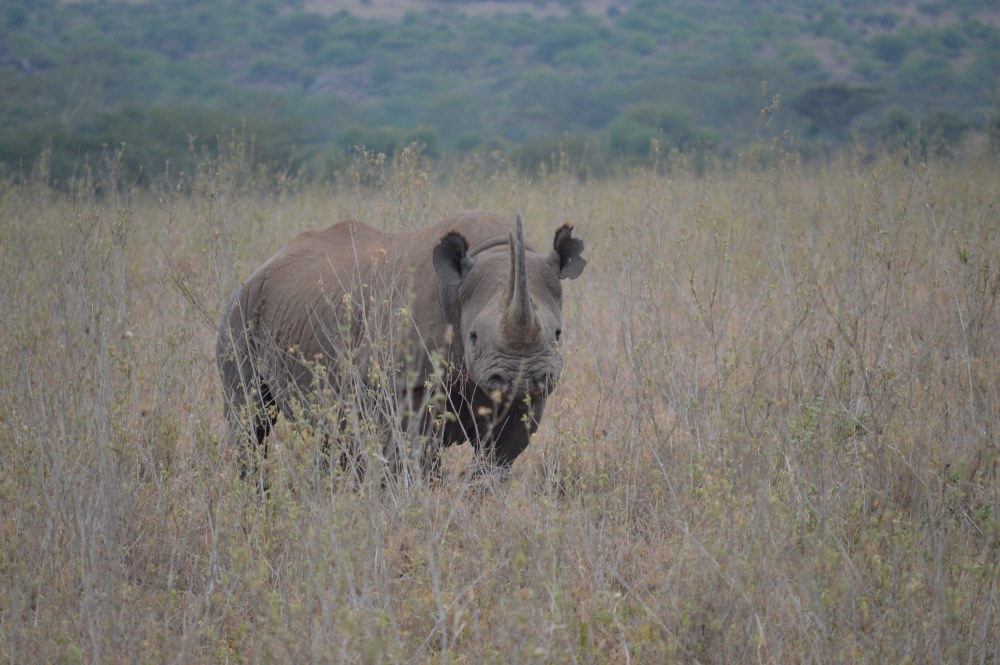
Nairobi National Park offers excellent rhino viewing, often with the unique backdrop of a city skyline.
Where to see rhino in Tanzania:
The Ngorongoro Conservation Area
The Ngorongoro Conservation Area, a UNESCO World Heritage Site, offers some of the most remarkable wildlife viewing experiences on the African continent. The region’s name is derived from the Ngorongoro Crater, the world’s largest unbroken and unfilled caldera, which offers a truly unique safari experience as game drives are enjoyed across the crater floor while the walls of the caldera rise around on all sides. The area is home to over 25,000 large animals and various bird species. While the rhino population within the crater is relatively small, they are frequently sighted hiding among the fever trees, albeit sometimes from a distance.
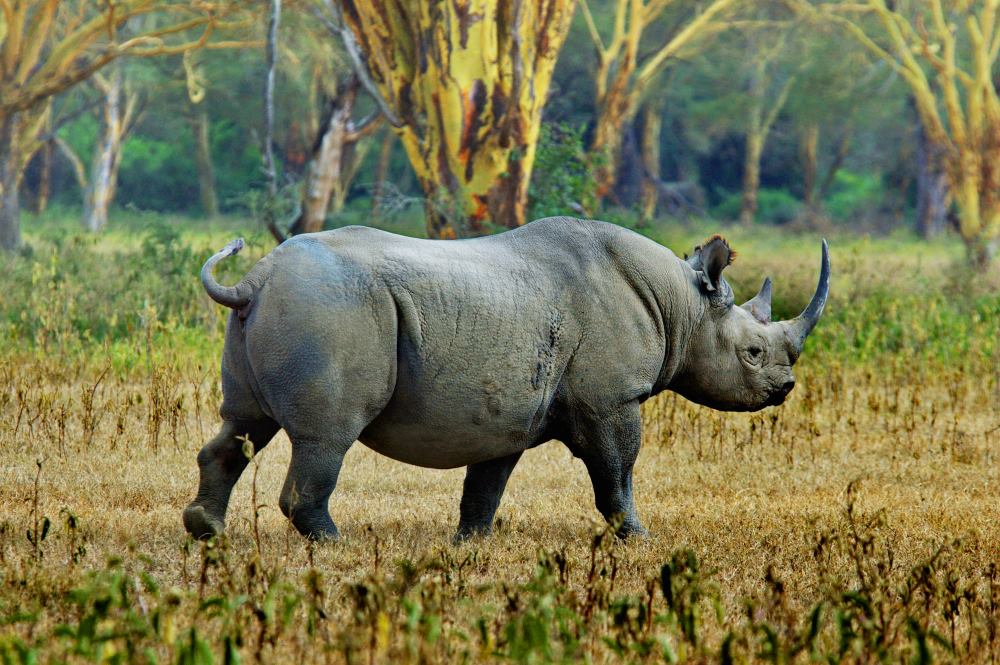
The small population of black rhino in the Ngorongoro Crater can be hard to find when they are hiding amongst the acacia trees.
In addition to the Ngorongoro Crater, the conservation area holds the Olmoti and Empakai craters, both offering spectacular walking opportunities through a variety of vegetation with excellent bird life. The Highlands is deliberately positioned away from the Ngorongoro Crater, close enough for game drives, but with strategic access to the wider landscape the conservation area offers. With no other safari lodges in the surrounding area, the level of exclusivity is unsurpassed as your nearest neighbours are traditional Maasai, herding their cattle and going about their daily lives.
Serengeti National Park
15 000km² of vast rolling plains stretching as far as the eye can see. The Serengeti National Park offers the quintessential Africa experience, featuring grasslands, granite kopjes, rivers and woodlands. Wildlife viewing in the Serengeti is spectacular all year round, with excellent cat densities and a variety of large mammals. With a bit of luck, the Serengeti can deliver a classic Big Five experience.
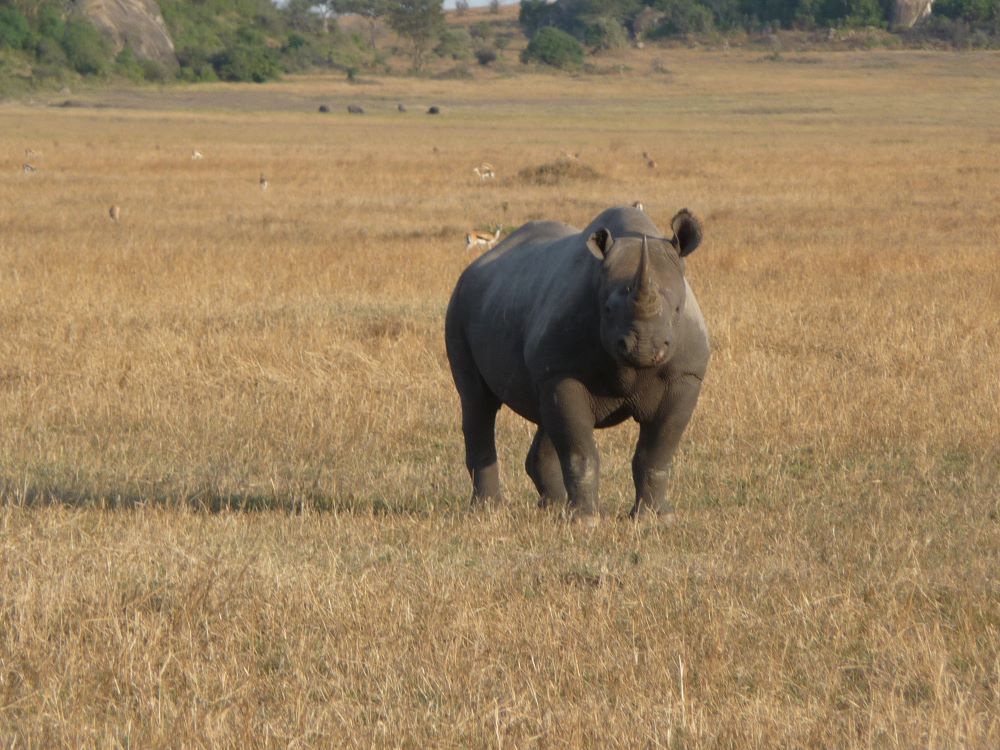
Dunia Camp is situated in the same vicinity as the Serengeti Rhino Project, making it the perfect accommodation option for rhino sightings.
In the south-central Serengeti, in an area called Moru Kopjes, is the Serengeti Rhino Project. The area is well patrolled by rangers and offers a sanctuary for the majority of rhino that call the Serengeti “home”, although some black rhino are occasionally spotted in the northern Serengeti by lucky guests from Sayari. The project was launched in 1995, after a 1993 census determined that there were only three black rhino remaining in the park – down from an estimated 700 just 20 years earlier. Since its formation, additional rhino have been introduced to boost genetic diversity, and new baby calves have been born. Today, the population has recovered and represents one of the largest black rhino populations in East Africa.
Dunia Camp, located within the Moru Kopjes area, is perfectly positioned to enjoy the diversity of wildlife this area affords. Apart from offering easy access to the Serengeti’s prime rhino viewing environment, the camp is also within easy reach of the wildlife rich Seronera Valley and intercepts The Great Migration as the herds slowly make their way northwards from the Southern Plains. During the calving season, the short grass plains are accessible on a full day game drive, with a picnic lunch to be enjoyed under the shade of an acacia tree.
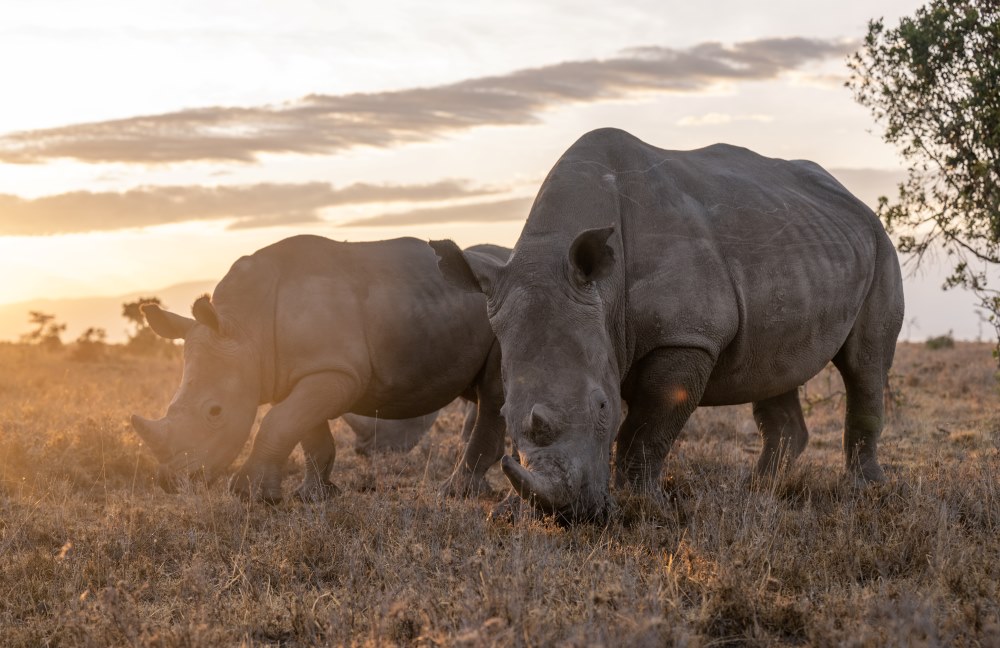
Conservation efforts in East Africa have led to recovering rhino populations, making for diverse and rewarding game viewing.
The plight of the rhino and the extent to which it has been documented, has made the rhino a highly sought after wildlife encounter from an African safari. While East Africa may not have rhino populations on the same scale as South Africa, there are rhino to be found in Kenya and Tanzania if you know where to look, and the opportunity for a diverse and wildlife rich safari experience awaits.
More Wildlife & Conservation Articles

Leopard vs Cheetah : Can You Tell The Difference
01 April 2020How often do you mistake a leopard for a cheetah or vice versa? I’m sure we’v...

What’s the difference? National Parks, Game Reserves, and Conservancies in East Africa
02 February 2020To most of us, a national park, game reserve, or conservancy are all the same...

Electric Vehicles: The Future Of East African Safari Travel?
12 January 2020October 2019 saw the arrival of our first electric, solar-powered safari vehi...

Guest Gallery: The Serengeti At Its Best
27 November 2019We recently had the pleasure of welcoming guests, Chris and Monique Fallows t...





